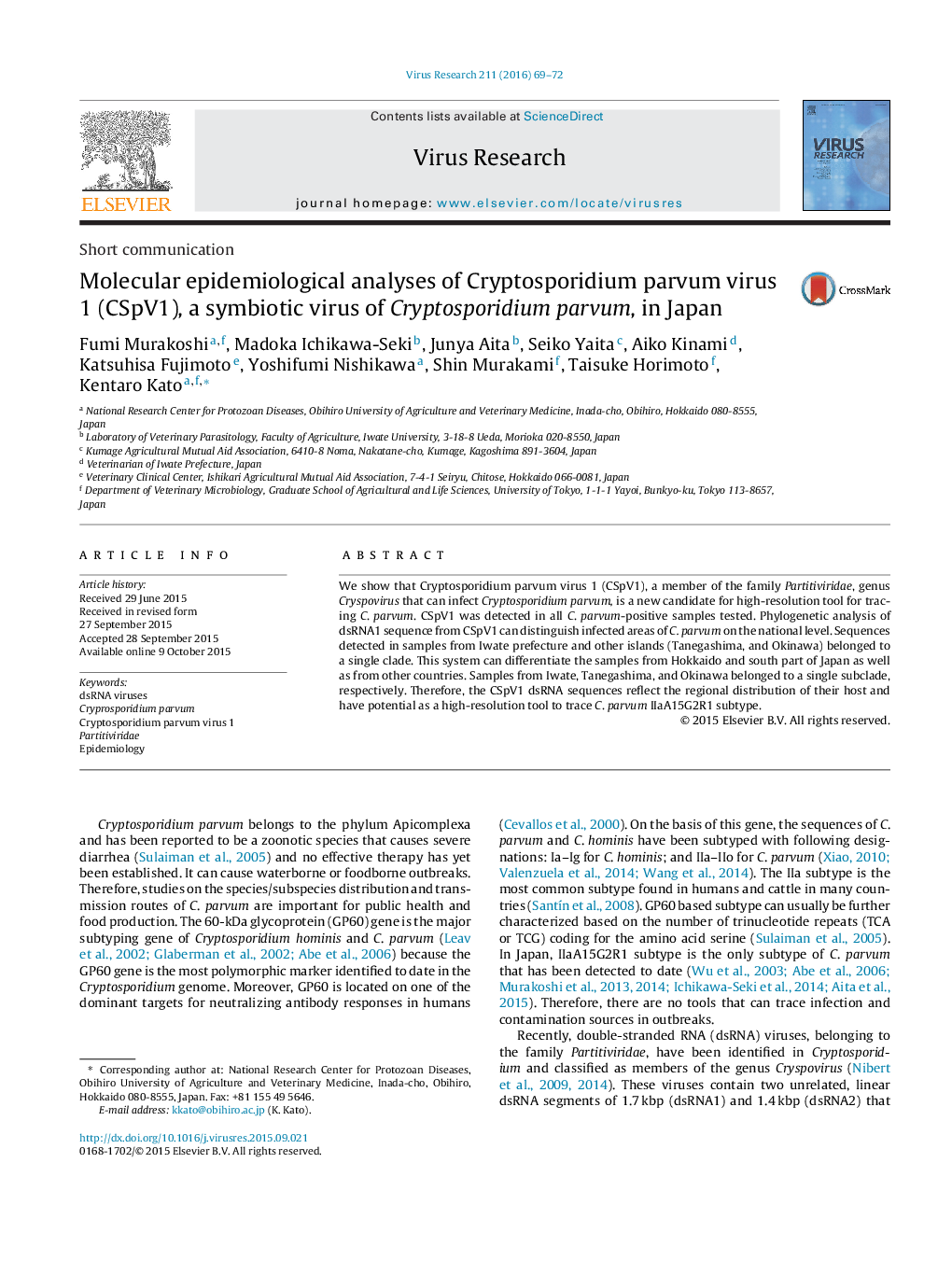| Article ID | Journal | Published Year | Pages | File Type |
|---|---|---|---|---|
| 3427974 | Virus Research | 2016 | 4 Pages |
•All Cryptosporidium parvum-positive samples were CSpV1 positive.•CSpV1 dsRNA1 reflect the regional distribution of C. parvum IIaA15G2R1 subtype.•CSpV1 dsRNA1 sequences have potential as a high-resolution tool to trace C. parvum.
We show that Cryptosporidium parvum virus 1 (CSpV1), a member of the family Partitiviridae, genus Cryspovirus that can infect Cryptosporidium parvum, is a new candidate for high-resolution tool for tracing C. parvum. CSpV1 was detected in all C. parvum-positive samples tested. Phylogenetic analysis of dsRNA1 sequence from CSpV1 can distinguish infected areas of C. parvum on the national level. Sequences detected in samples from Iwate prefecture and other islands (Tanegashima, and Okinawa) belonged to a single clade. This system can differentiate the samples from Hokkaido and south part of Japan as well as from other countries. Samples from Iwate, Tanegashima, and Okinawa belonged to a single subclade, respectively. Therefore, the CSpV1 dsRNA sequences reflect the regional distribution of their host and have potential as a high-resolution tool to trace C. parvum IIaA15G2R1 subtype.
